My Tell Tale Pyrography
by Prof. Nsir Malik
Islamabad, Pakistan
Way back in 1965, when I graduated from National College of Arts, Lahore, I had a two prong
craze; one was cartoon animation and the other was to paint with fire or Pyrography. It all started with my interest
in photography and I always had a couple of lenses in my pocket, for various small, innocent
ventures. While playing with lenses and the sun I would burn religious names on dry leaves or a piece of
wood and pyrograph some small patterns. That lead me to try my hands at doing larger
pieces of dry tree bark. I would sit for long hours in the hot sun and try to burn motifs and letters,
but it was very challenging to bear the heat and keep my hand steady.
My mates around me appreciated my test pieces and encouraged me to try working with slightly bigger
pieces of real wood. It would take hours and hours and spill over into the following day. But to
complete one art piece it was a discouragingly long time. I kept on leaving and going back to my
sun burning while looking for a better way out. I tried heated nails, pointed steel sticks, and
standing next to my home cooking range, but that was also a demanding exercise.
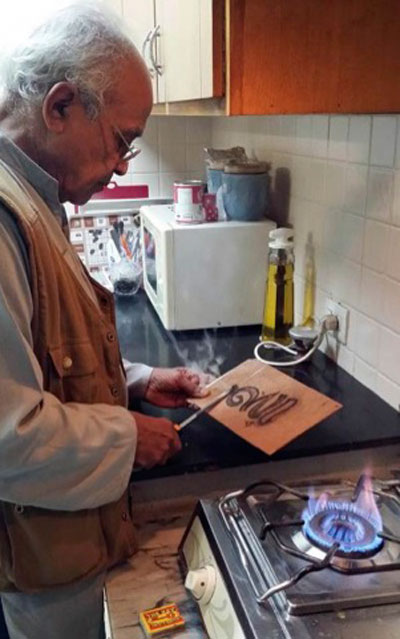
|
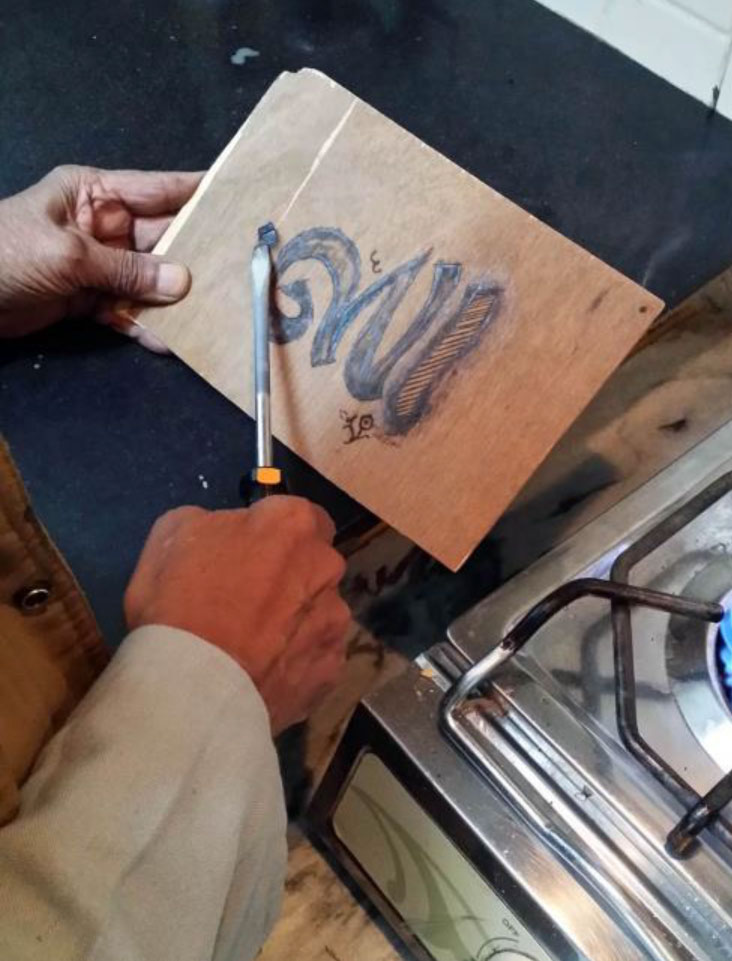
|
Next, as one of my hobbies was Radio repairing, I discovered that a soldering iron could also be
used for pyrography. But the length and very hot tip did not deliver any good results. As my craze kept me
locked onto trying and trying I got hold of a 12 volt car battery. I pulled pieces of Nichrome wire
from my home electric heater and tried to use it for my purpose. It would glow red hot and where
ever it touched it would set it into flames. No success so far as I could not control the large amount
of current flowing through those Nichrome wires. Putting any pieces of same wire in a series as
resistance also failed.
Time went by but my thirst was still alive. Weeks turned into months
and months into years while I tested all the possible ways. It was the end of 2000 when I learned that
some people were using variable transformers and low voltage/ high current as a possible solution. I had
so many transformers and chargers lying around. I also had the speed regulator from old ceiling
fans. I started converting the battery chargers and over the years burned a few of those
charges. Getting low voltage like 2 to 6 volts was easy by now, but to control the current was not
yet possible.
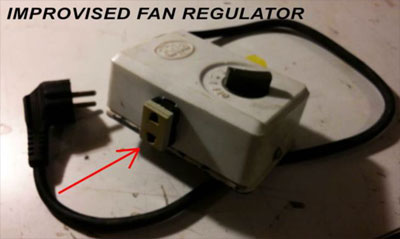
|
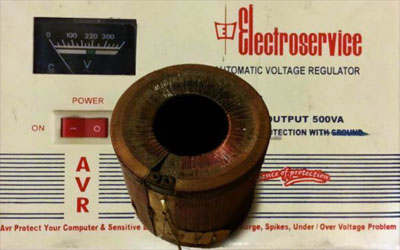
|
One of my friends was manufacturing rotary variable voltage regulators. That sparked an idea and I
borrowed one from him. First, I converted it into a manual regulator so that I could vary the
voltage in small steps. I added a step down transformer to get 110 volts from the main 220
volts. The regulated output was well in the range and small variations became possible. I also
added an old fan regulator for further control. It gave me around 1-2 volts with reasonable
current but not enough to heat up a 24 or 26 gauge Nichrome wire as it resulted in blowing the
safety fuse.
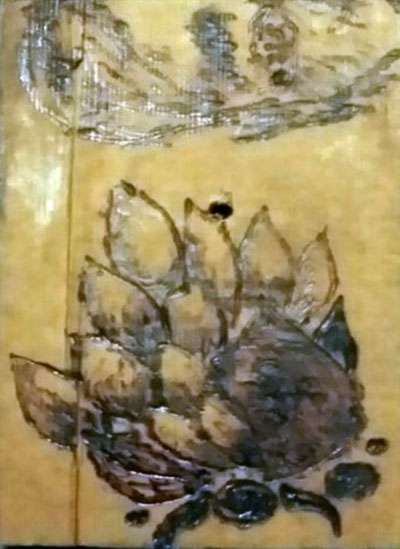
|
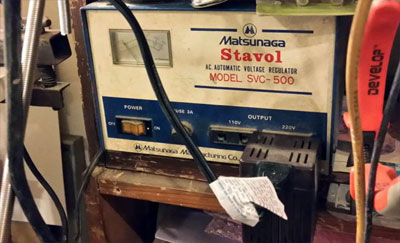
|
After another couple of years I found a heavy duty 220 volt battery charger designed to give 25
amps at 6, 12 and 24 volts. Bingo. I felt I was in luck. To get lower voltage I added the same old
220/110 step down transformer. My old fan controller started to give me some control and I
was getting 10+ amps at less than 2 volts. My dream was coming true! I started to test myself and made
probes or Nibs of 24 size wire. Images started to appear, finally, after ages of hard work. But I still needed a low voltage magnetic dimmer.
I tried a dozen of the regular dimmers available in the local market but they all got burnt after a few
minutes. I was depressed. I went from shop to shop all over the city but no one had the
magnetic dimmer that I needed.
I was walking out from the last shop when I heard a salesman assuring one customer that
the dimmer he was offering was used on grinders and heavy drill machines. I turned back and
bought a couple of those rather ugly looking devices. I drove home with strange excitement. I
disconnected the old fan controller, connected the ugly dimmer, and with a pounding heart I
switched on my system. Slowly, I turned the dimmer control and it started to increase the current very
smoothly from zero onwards. I turned it back fearing it would die soon. I tried again a couple of
times but quickly switched it off, fearing it might blow. Nothing happened and the dimmer was
not heating up either. It was actually the Low Voltage Magnetic Dimmer I needed, but the seller had no
idea at all!
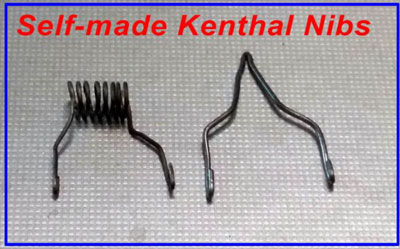
|
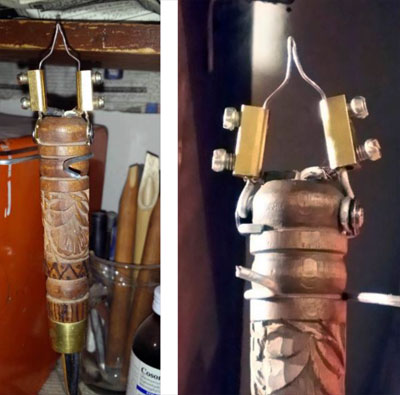
|
By now I had devised my own Pyrography Pen and most of the nibs that I could think of.
Excited as I was, I switched the burner on and increased the current until I could see a low red glow on
the nib. I carefully grabbed my own wood burning pen and started to draw on a piece of wood.
Then I decreased the current and tried shading. BINGO. I was there after so many long years!
Below are some of the Pyrographic Paintographs that my contraption has helped me to
create. Finally I have succeeded, finally my tool is there and working like a pro. Thank God my
dream has come true!
If you have any questions or comments, feel free to email me at
nsir.malik@gmail.com
.
Return to
Wood News
front page


